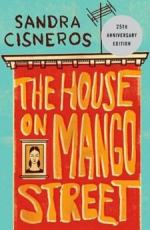|
This section contains 5,418 words (approx. 19 pages at 300 words per page) |

|
SOURCE: "Different Voices: The Re-Bildung of the Barrio in Sandra Cisneros' The House on Mango Street," in Anxious Power: Reading, Writing, and Ambivalence in Narrative by Women, edited by Carol J. Singley and Susan Elizabeth Sweeney, State University of New York Press, 1993, pp. 295-312.
In the essay below, Gutiérrez-Jones discusses Cisneros's transformation of conventional elements of the Bildungsroman genre in The House on Mango Street, focusing on the link between communal and individual narrative strategies.
I
The space of a tactic is the space of the other. Thus it must play on and with a terrain imposed on it and organized by the law of a foreign power.
—de Certeau, The Practice of Everyday Life
Dreaming of a day when she might attain the "American dream" of home ownership, the young protagonist of Sandra Cisneros' The House on Mango Street promises herself that if that day...
|
This section contains 5,418 words (approx. 19 pages at 300 words per page) |

|


